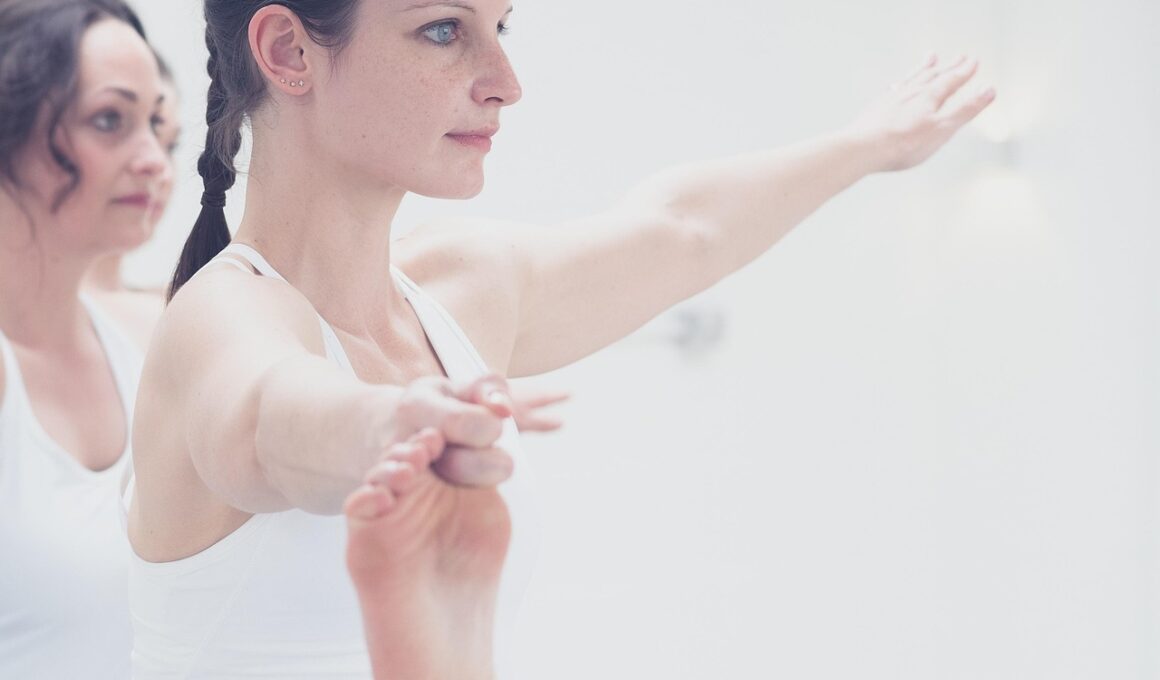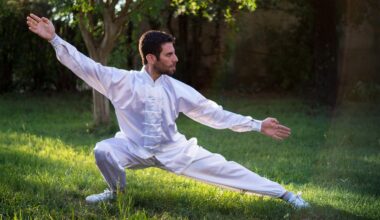Top 10 Flexibility Exercises for Seniors to Improve Mobility
Flexibility exercises provide essential health benefits, especially for seniors looking to improve mobility and maintain independence. As our body ages, our muscles and joints tend to lose elasticity and strength, making it crucial to include stretching in our routines. Not only does improved flexibility aid in daily activities, but it can also reduce the risk of injury during other physical activities. By dedicating just a few minutes each day to flexibility workouts, seniors can enhance their overall quality of life. Incorporating these exercises into your routine does not require extensive equipment or studio memberships, as they can be performed at home. Regular practice helps seniors regain their range of motion and elasticity while alleviating muscle stiffness and improving blood circulation throughout the body. Additionally, engaging in flexibility exercises encourages mindfulness and connection with the body and its rhythms. A consistent practice promotes relaxation and stress relief, which can further enhance mental well-being. Explore options such as yoga, stretching routines, and gentle movements to ensure a well-rounded approach to fitness for seniors. Let’s dive into the top ten flexibility exercises specifically designed for seniors.
1. Standing Quadriceps Stretch
The standing quadriceps stretch is an effective way to enhance flexibility in the front of your thighs while fostering better balance. Begin by finding a sturdy chair or wall for support. Stand up straight, and gradually bend your right knee, bringing your heel towards your glutes. Grasp your right ankle with your right hand, holding for fifteen seconds. Ensure your knees remain aligned to prevent strain. Remember to engage your core and maintain an upright posture throughout the stretch. To feel the full benefit, switch legs and repeat the exercise. Aim to stretch each leg two to three times. This exercise is particularly valuable for seniors who may experience tightness in the quadriceps due to prolonged sitting or less active lifestyles. Performing this stretch consistently can enhance mobility while reducing the risk of falls by improving balance. Always ensure that you do not push your limits; be gentle and listen to your body’s signals. As you progress, you will likely feel an increased range of motion and a reduction in muscle tension. So, take your time and enjoy the improvements in your mobility.
The seated hamstring stretch promotes increased flexibility in the hamstrings and lower back, which is essential for seniors. To perform this exercise, sit on the edge of a sturdy chair with your feet flat on the floor, hip-width apart. Straighten your right leg in front of you, keeping your heel on the ground while your toe points towards the ceiling. Gently lean forward from your hips while keeping your back straight and your chest lifted. You should feel a stretch in your hamstrings. Hold the position for fifteen to thirty seconds before slowly returning to the starting position. Repeat the stretch on the other leg. Performing this stretch regularly helps improve lower body flexibility and can decrease the chances of experiencing discomfort during daily activities. Aim for two sets per leg, and consider incorporating deep breathing as you stretch to enhance relaxation. If you find it challenging to reach your foot, you can use a towel for support. As you practice, you may notice an improvement in your posture and the ability to perform everyday tasks with minimal discomfort, contributing to a greater quality of life overall.
3. Seated Spinal Twist
The seated spinal twist is a fantastic flexibility exercise that targets your spine and promotes torsional movement, aiding in better digestion and alleviating lower back tension. To begin the exercise, sit up straight in a chair, feet flat on the floor, while keeping your spine aligned. Place your right hand on the back of the chair for support, and gently twist your torso to the right, looking over your shoulder. Hold this position for around fifteen seconds while taking deep breaths, feeling the stretch in your back and hips. Return to the center and switch sides to repeat the stretch on the left. This exercise is particularly beneficial for seniors as it encourages spinal flexibility while promoting balance. The gentle torsion can also help relieve stiffness after long periods of sitting. Try to incorporate the seated spinal twist into your routine two to three times per week, and you may quickly experience improvements in mobility and reduced discomfort associated with everyday activities. As you gain more flexibility, strive to increase the duration of your holds to deepen the benefits.
Child’s pose is a fundamental yoga position that enhances flexibility while providing a gentle stretch for the back, hips, and thighs. To enter this pose, start on all fours, aligning your wrists beneath your shoulders and your knees beneath your hips. Slowly lower your hips back towards your heels while extending your arms forward on the floor. Allow your head to rest comfortably on the mat, breathing deeply in and out. Hold the position for thirty seconds, focusing on your breath and relaxing into the stretch. Child’s pose is perfect for seniors, as it can be easily modified for comfort. If kneeling is difficult, you can practice this stretch while seated upright in a chair. Performing this gentle pose regularly can improve overall flexibility, alleviate tension, and promote relaxation, making it a valuable part of your stretching routine. Strive to incorporate this position three to four times a week. As you become more comfortable in the pose, you may feel a deeper stretch and increased tranquility. Embrace the benefits of this nurturing movement, and allow yourself to discover the profound connection between body and breath.
5. Cat-Cow Stretch
The cat-cow stretch is a popular exercise that promotes flexibility in the spine while encouraging relaxation and mobility. To perform this stretch, begin on all fours, ensuring that your wrists are directly aligned beneath your shoulders and your knees are beneath your hips. Inhale deeply, creating an arch in your back by lifting your head and tailbone towards the ceiling. This is your cow position. As you exhale, round your back, tucking your chin to your chest and drawing your belly button towards your spine—this is your cat position. Alternate between these two positions, synchronizing your movements with your breath. Performing this stretch for five cycles can significantly increase spinal mobility and relieve tension accumulated in the back. Seniors may find that incorporating the cat-cow stretch into their routines enhances daily mobility and reduces discomfort caused by extended periods of sitting. Practice this exercise two to three times a week to feel more energized and flexible. As you progress, take time to notice the coordination of breath and movement, allowing this practice to create a deeper sense of mindfulness in your life.
The chest opener stretch is essential for promoting flexibility in the shoulders and chest, improving posture for seniors who may spend long periods seated. To perform this stretch, stand with your feet hip-width apart and take a deep breath. Interlace your fingers behind your back, straightening your arms while gently pulling your shoulders back to open up the chest. Hold the stretch for around fifteen to thirty seconds, allowing your body to release tension as you breathe deeply. Focus on maintaining proper posture with a lifted chest throughout the stretch. This exercise can help relieve tightness created by slouching and encourage better alignment. For additional comfort, you may perform the stretch seated, depending on preference. Incorporate this stretch into your regular routine by practicing it two to three times a week. You may find improvements in your overall flexibility and a reduction in discomfort experienced during daily activities. By including the chest opener stretch in your wellness journey, you’ll support not only physical well-being but also enhance the mind-body connection through intentional movement.
7. Ankle Circles
Ankle circles are a simple yet effective exercise that strengthens ankles while increasing flexibility and range of motion. To perform this exercise, sit comfortably in a chair with your feet flat on the ground. Lift your right foot slightly off the floor and move your ankle in a circular motion, completing ten circles in one direction before switching to the opposite direction. This will warm up the ankle joint and promote circulation, which is especially essential for seniors. After completing both directions for one ankle, switch to the left ankle and repeat the same process. Regular practice of ankle circles can help with balance and overall leg strength. If you want to enhance the challenge and engage your legs further, you can use light resistance bands when practicing ankle circles. In addition, consider adding this exercise to your daily routine to maintain ankle flexibility as you age. Performing ankle circles two to three times a week can decrease the likelihood of slips and falls, increase mobility in daily activities, and participate actively in social engagements.


